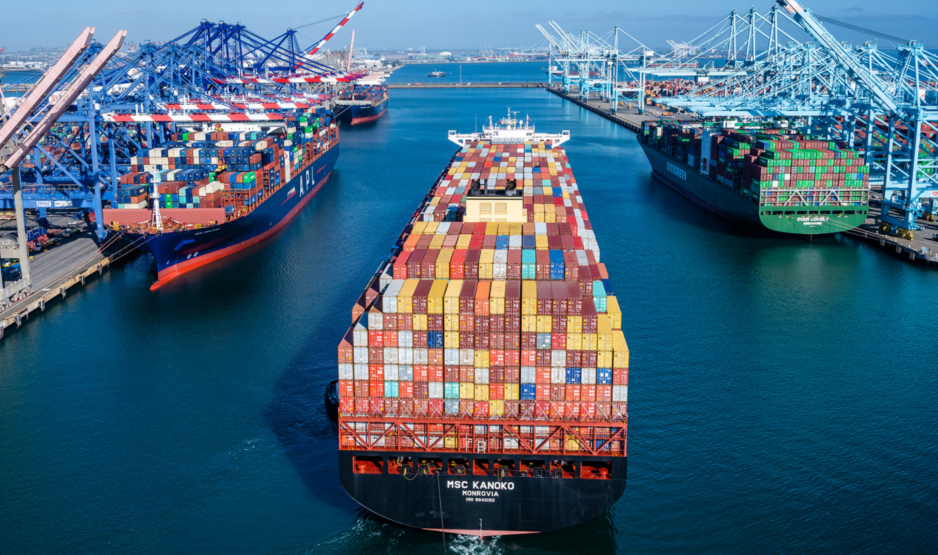SAN PEDRO, Calif. – The Port of Los Angeles moved 828,016 twenty-foot equivalent units in August, a 3% increase compared with the same period last year. It was the port’s first monthly year-over-year increase in 13 months.
August was also up month-over-month, with a 21% gain from July.
“August was a very solid month with increases both on the import and export sides of our business,” Port director Gene Seroka told journalists at a media briefing. “Overall, global trade has eased this year, and we expect that trend to continue in the coming months. Operationally, Los Angeles stands ready with capacity we’re prepared to scale on demand.”
Seroka also noted the recent ratification of the six-year contract between the International Longshore and Warehouse Union and the Pacific Maritime Assn., saying it’s restoring stability and confidence in the port.
“With this contract in effect through 2028, you can continue to count on our longshore workers and terminal operators to keep cargo moving through the nation’s busiest port,” Seroka said.
Still, Seroka’s outlook remains on the bleak side. Demand for containers remains relatively light, he said, which is reflected in the 270,000 empty TEUs handled in August, a 10% decline from last year. Year to date, the port is down 20% in volume from last year.
“Overall, as we navigate through what’s expected to be a muted peak season, global trade is slower overall,” he said. “Export numbers out of Asia are declining. China’s had three consecutive months of weak exports. South Korea and Vietnam have also seen drops in volume. That’s three of our top five trading partners. Warehouse inventories across the U.S. also remain elevated.”
Seroka says American consumers remain resilient and continue to spend but not at the historic levels seen during the pandemic.







